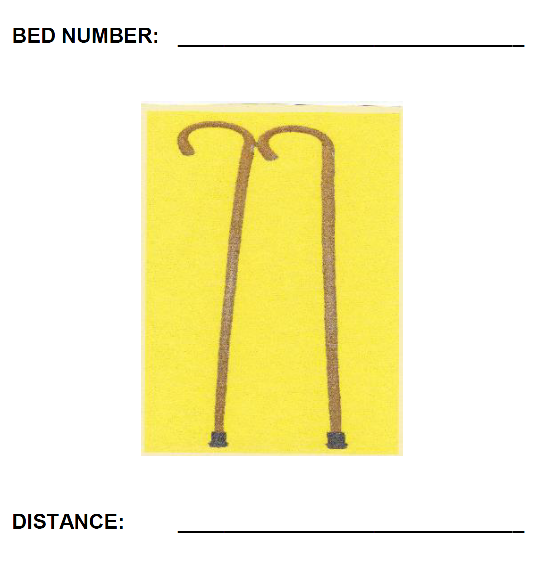 he challenge was providing suitable communication after physiotherapy treatment to all members of the Multi-Disciplinary Team (MDT) to see, clearly at a glance, the safe mobility status of the patient at all times.
he challenge was providing suitable communication after physiotherapy treatment to all members of the Multi-Disciplinary Team (MDT) to see, clearly at a glance, the safe mobility status of the patient at all times.Prior to the charts being used verbal feedback was provided after a treatment session and at MDT handover.
Susan Walters, Senior Specialist Physiotherapist at South Tees Hospitals NHS Foundation Trust looked at the usefulness of having a permanent, documented, easy to view/read method of communication positioned at the patient’s bedside.
This could be viewed at any time of the day by any member of the ward team, family and visitors, which would communicate, up to date current levels of achievement regarding their mobility status from the patient’s last physiotherapy treatment session. It would show the walking aid used, the distance mobilised and the staff assistance required for the patient to mobilise safely, denoted as the colour of the chart, so this is clear from a distance as a member of staff walks towards the patient.
For example, if the patient uses their call buzzer during the evening and requires the toilet, as a member of the ward team approaches the patient they would know instantly what walking aid the patient is currently using, how far they are able to safely mobilise with this aid and how many members of staff the patient requires to safely mobilise with this aid. Thus improving communication, patient and staff safety, falls prevention and quality of care.
Susan designed and produced a ‘Key’ for colour coded ‘Mobility Charts’ and placed a ‘Key’ in each bay and the ward team was fully briefed before a pilot took place using the charts on the ward with patients.
After the pilot the ward team completed an anonymous questionnaire answering questions and giving any comments regarding the use of the chart with patients on the ward. The pilot was a success and the Physiotherapy Mobility Charts have been in full time use since.
Quotes from Multi-Disciplinary Team
“Greater efficiency, as you can see at a glance the mobility status of the Patient” Orthopaedic Nurse Practitioner
“It (The Physiotherapy Mobility Chart) gives all staff a better understanding of what the patient’s capability is on mobility and what type of and correct equipment is used for all individual patients” Health Care Assistant
The introduction of the Physiotherapy Mobility Communication Chart:
• ensures each patient is mobilising at their level of mobility when mobilised;
• ensures the correct walking aid for their current level of ability is utilised;
• ensures the patient, when mobilising, is receiving the correct level of assistance for safe mobility for their current level of ability;
• the members of the Multidisciplinary team are fully aware of the current distance the patient is able to safely mobilise, as documented from their last physiotherapy treatment session;
• facilitates patient rehabilitation;
• aids the patient reach the level of mobility they need for discharge as soon as they are able, with the appropriate walking aid and level of assistance they need each time they mobilise.

